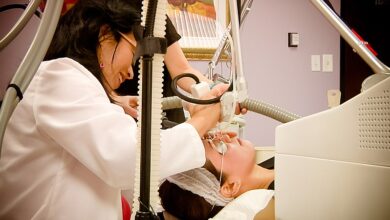Workflow Optimization: 4 Strategies to Enhance Hospital Processes

Hospitals are high-traffic, high-pressure environments. The high volume of people inside the healthcare facility is expected. However, without direction, this heavy indoor traffic can negatively impact your operations.
It’s difficult for physicians to move around and transfer patients when the workflow is complicated and inefficient. This kind of delay can negatively impact the quality of your patient care.
Aside from the physical traffic in hospitals, redundant processes and slow transfer of information affect the delivery of healthcare services. These create bottlenecks in your workflow, increasing the likelihood of staff errors and oversights and delaying the recovery of your patients. It’s a scenario that snowballs into a bigger problem: lack of available beds due to delayed patient discharge, which only leads to a more crowded waiting room.
Avoid these bottlenecks by optimizing your hospital workflow. A smooth, seamless workflow ensures your patients get the treatment they need as quickly as possible, expediting their recovery. With an efficient system, your medical facility accommodates more people and improves patient care.
How do you create an efficient hospital workflow?
- Establish a real-time communication system
It’s common for hospital staff to use multiple communication devices simultaneously – from emails, text messages, phone calls, overhead paging systems, and pocket pages. Although these systems have different purposes, the number of communication devices increases the likelihood of missed notifications.
Establish a more efficient communication system with HIPAA-compliant electronic medical record (EMR) systems. This secure messaging platform sends automated alerts, notifying you when lab results are ready or when a patient can be transferred to a regular room.
EMR systems not only serve as instant messaging apps, they also allow doctors to make and accept requests, process prescription renewals, and access medical histories, among other functions. This software is available on smartphones, so physicians and nurses can check their notifications from anywhere.
Some advanced EMR software have additional capabilities. These help medical professionals prioritize cases according to urgency, manage their schedules, track patient status, and more, increasing hospital productivity and efficiency.
- Streamline documentation processes
One aspect of the hospital workflow that commonly causes delays is clinical documentation. Manual methods take too long, which is a problem since doctors need real-time updates on a patient’s condition.
You can expedite and streamline your documentation process through the EMR system. A digital documentation system lets you type in the patient’s status and upload it instantly on the EMR dashboard for easy access. Medical professionals who are assigned to the patient will get a notification once you’ve sent in an update on the individual’s condition.
This system speeds up your documentation process, making your hospital workflow more efficient. Apart from that, documenting and tracking patients digitally instead of by hand eliminates legibility issues. Doctors tend to rush when doing writing down patient updates, which can result in scrawled notes, increasing the likelihood of errors.
Another aspect of the hospital workflow that frequently encounters bottlenecks is patient admission.
- Simplify patient admissions
The admission process usually involves desk-to-desk hand-offs, which means longer wait times for patients. This kind of system affects the patient experience and prolongs the delivery of necessary treatments and medical services. Plus, the holdup can lead to crowded waiting rooms, which affect your operational efficiency.
Simplify your patient admission process by automating or digitizing it. You can make necessary paperwork available on your website, such as insurance and new patient forms. This way, patients can fill them out before heading to the hospital, minimizing delays in their admission.
You can also streamline your admission process and other administrative functions through self-service kiosks. These simplify patient admission into a step-by-step process, eliminating the need for hand-offs between desks. This technology reduces waiting time for patients and makes your workflow more efficient.
Self-service kiosks allow patients, with the help of their chaperones, to check into the hospital without the help of medical administrators, freeing up your staff for more important tasks.
Part of the hospital workflow is patient flow. Delays in patient flow are common, caused by lack of available beds, incorrect ward placement, delayed diagnosis decision, and other bottlenecks. Some of these problems can be solved through the EMR system, and others can be addressed with location systems.
- Track patient flow real-time
Real-time location systems (RTLs) find patients, staff, and even equipment. The system displays the location of these assets on an online map, letting you find what and who you need quickly.
When you combine RTLs with centralized admission and discharge platforms, you gain access to a dynamic rooming or schedule planner that uses visual cues to identify which beds are available. You’ll be able to plan the placement of patients more efficiently based on who has the most critical condition and immediately assign them a room, speeding up your patient flow.
Monitoring the real-time locations of mobile equipment also proves beneficial. You can assign patient to rooms near the equipment they need or quickly transfer the machine to their ward before checking them in.
Hospital workflow optimization involves planning and anticipating what your patients need throughout their stay at your facility. Fortunately, technological advancements, such as EMR and RTL systems, help you fine-tune the different aspects of your workflow. Invest in the right technologies and integrate them into your processes to improve your patient experience.






